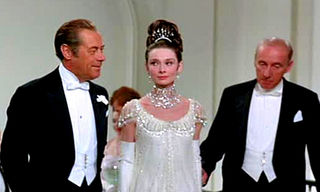
It was Henry Higgins who once exclaimed, “Damn, damn, damn, damn. Why can’t a woman—be more like a man.”1 Today, we might ask, “Why can’t a man be more like a woman”—when it comes to being human, without extolling the virtues of male moral behavior.
Contrary to Freud’s position on the superiority of male moral behavior, Robert Stoller, a psychoanalytic theorist back in the 1960s, believed girls are more inclined to experience a greater sense of social justice than males, who are prone to identify personal success with their position in the male hierarchy, allowing social inequities to fall where they may.2
Also in contrast to Freud’s position that masculinity is the natural state and femininity is at best a successful modification of it, Stoller believed the little boy’s relationship to his mother makes development of feminine qualities more likely. To create her femininity, a little girl does not have to surmount her relationship with her mother. The little boy, however, has to break away from the pull of his mother’s femaleness and femininity, a task often difficult and frequently overcompensated with masculine hubris.
Little boys, in defining themselves as masculine, not only emerge from an early age as less able to experience another’s needs or feelings as their own, but in their quest for personal achievement, to disregard others and further separate from feminine values. Since girls do not have to separate from their mothers to establish their identities, it can be said that femininity is a more “natural” state.
Charles Horton Cooley, a sociologist in the early twentieth century, noted that while women were gaining the right to vote, the overriding fear among men was the uprooting of social organization, along with civilization itself.3 He saw the difference between Americans and the tribes of Caesar’s day not in human nature or capacity, but in social organization. Cooley believed the aspirations of democracy, including socialism, sprang from primary groups, such as the family, the play group of children, and the neighborhood or community group of senior citizens. These groups were held together by a sort of sympathy and mutual identification, for which “we” was the natural expression, embracing equal opportunity, fair play, service to the common good, free discussion, and kindness to the weak.
The cause of moral failure was the heavy fallout of crude commercialism and continuing economic concentration that had obscured the course of history in a society with vast mobile wealth. And wealth would have its way in American politics. Cooley mused that nothing in social psychology was more certain than that if we desired the good will of a rich or powerful person that we would adopt our way of thinking to that person. We abandoned our long-term goal for social equality and, having a few extra dollars in our pockets, became so entirely dominated by the habits of a democratic aristocracy that even leaders of the labor movement upheld the corporate establishment without knowing it.
The two social forces that Cooley foresaw as helping save American democracy were the confused and deprived immigrant, who was likely to be the initiator of a new primary trust in, and kindness toward, others. The other force for reform would involve the participation and guidance of women, organized as a social group. Women had the power of sympathy, as practiced in the family, children’s play groups and the elderly community, that would allow for the transforming of our social institutions. The critical question was whether women would develop a group consciousness of their own or succumb to the degenerate thinking of others.
In sum, social equality and social structure need not be incompatible. We need several layers of social structure between children, their parents, and grandparents. Structure is also necessary in schools and the workplace. But social structure cannot be equated with social hierarchy. For example, fascism and democracy both provide structure, but the former is vertical, that is, decisions at the top of the totem pole are transmitted downward, while the latter is horizontal, with decisions across the bottom transmitted upward. The structure of democracy, with its egalitarian principle of one person, one vote, was horizontal from the beginning. The real choice is not between hierarchy and the absence of structure, but between vertical structure and horizontal structure.
*
This blog was co-published with PsychResilience.com
References
1. Shaw, G.B. (1913) Pgymalion, stage play in London 1913, later adapted into a movie (1938) and the musical My Fair Lady in 1964
2. Stoller R.J. (1968), Sex and Gender, London, England: Hogarth Press, 1968
3. Cooley, C.H. (1922) Human Nature and the Social Order, New York, NY: Charles Scribner’s Sons, Revised 1922


